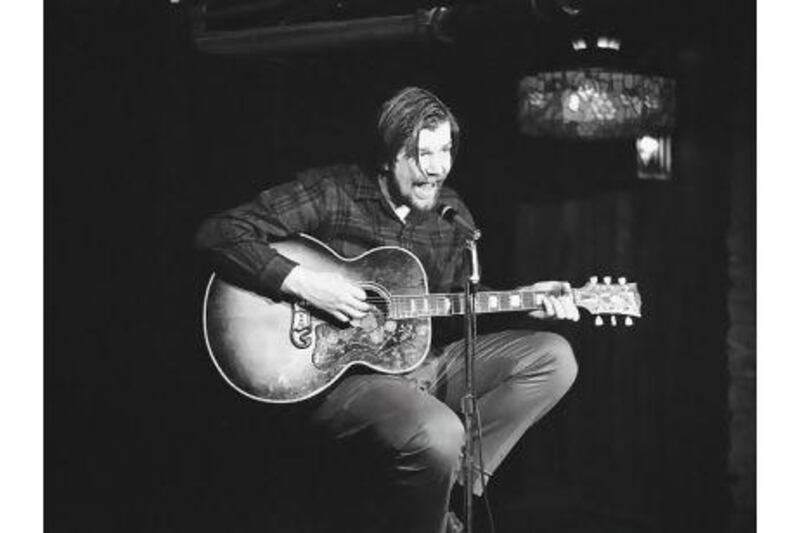After revitalising the Western with the brilliantly gruesome True Grit, the Coen Brothers have chosen a not-so-wild stage for their next project: the 1960s New York folk scene, and in particular the life of the singer Dave Van Ronk. The auteur boys had already dabbled with a previous incarnation of American folk, bluegrass, in the hugely successful O Brother, Where Art Thou? But what other dramas unfolded in those beatnik coffeehouses? And which of folk's later offshoots - and oddball characters - could they choose to complete the trilogy? Si Hawkins speculates
The Coffeehouse Years
Epicentre: New York's Greenwich Village, the early 1960s
The sound: Traditional campfire anthems with added politics and pop
Key album:The Freewheelin' Bob Dylan, even though Joan Baez came first
The hip cafés of Boston and Minneapolis may cry foul - they launched the careers of Baez and Dylan respectively - but Greenwich Village gets all the credit for the folk revolution. Not that it was particularly harmonious. For every fresh-faced young troubadour bringing America's musical heartland into the rock 'n' roll era there was a sour-faced traditionalist complaining about it. Folk sure does fire the passions.
Unsung hero: The former barbershop singer Dave Van Ronk was the go-to guy for those seeking guidance: Dylan even slept on his couch for almost a year. Hence, that breakthrough album should really have been called The Freeloading Bob Dylan.
Folk Rock
Epicentre: California, the late 1960s
The sound: Like Dylan's early stuff, but with jangly electric guitars and less jarring voices
Key album: The Byrds' Bob-fuelled debut LP Mr Tambourine Man
When Dylan was booed in 1965 for going electric, those protesters were really just warning the world that this hybrid sound would eventually spawn the Eagles. Initially it spawned the Byrds, who successfully reworked Dylan's songs for people who disliked Dylan's versions. Buffalo Springfield and Crosby, Stills and Nash then released some fine records, after which Don Henley's Eagles brought folk-rock into the 1970s, eschewing any lingering hints of the protest movement by telling us to, hey, Take It Easy.
Unsung hero: David Crosby, who cofounded both the Byrds and Crosby, Stills and Nash, dated Joni Mitchell, was jailed several times and wore an impressively walrus-like moustache.
Prog Folk
Epicentre: London, the mid-1960s
The sound: Folk rock with added psychedelia, jazz and pretentiousness.
Key album: (The) Pentangle's debut album, which begins with the tellingly-titled Let No Man Steal Your Thyme
While the first wave of US folk-rockers were shifting serious units, over in the UK electric folk was entering a new, more difficult dimension. The Incredible String Band, Pentangle and their ilk generally consisted of earnest, balding jazz musicians and wispy frontwomen with flowered hair and weedy voices. Unlikely alumni include Marc Bolan's Tyrannosaurus Rex (later renamed T Rex), who would morph into a glam-rock outfit.
Unsung hero: The Incredible String Band singer "Licorice" McKechnie, who had been due to marry Pentangle's Bert Jansch until he ran off to Morocco, ended up with ISB's Mike Williamson, then disappeared completely.
Folk Punk
Epicentre: London and Milwaukee, the early 1980s
The sound: Fiddles with attitude
Key album: The Violent Femmes' eponymous debut, which kicks off with the magical Blister in the Sun
Folk and punk seemed the unlikeliest of bedfellows until the Pogues came along, with a rootsy, ranty ethos epitomised by the founders Spider Stacy (tin whistle, guitar) and Shane MacGowan (gap-toothed mayhem). From Milwaukee, meanwhile, came the Violent Femmes, who eventually fell out when Blister in the Sun turned up in a hamburger advertisement. Folk and burgers do not mix.
Unsung hero: Former MacGowan bandmate Shanne Bradley went on to form the folk-punk outfit The Men They Couldn't Hang, who wrote proper protest songs and were almost permanently banned from British radio.
Folk Metal
Epicentre: London 1990, then Helsinki 2000
The sound: Remember the excruciating Stonehenge sequence from the heavy metal mockumentary This is Spinal Tap, with the mandolins and dwarfs? Very much like that.
Key album: Skyclad's epic debut The Wayward Sons of Mother Earth
In 1990 a couple of disenchanted thrash metal musicians experimented with folky instrumentation in order to make their new project Skyclad "the ultimate pagan metal band". This they achieved with relative ease until the early 2000s, when folk metal inexplicably became massive in Finland. Scene-leaders Finntroll have also been described as "goblin metal", however, so the folk/pagan title may still be up for grabs.
Unsung hero: Skyclad stalwart Steve Ramsay, whose previous band Satan changed its name to Blind Fury, then The Kindred, then Pariah, then back to Satan.
Freak Folk
Epicentre: New York and San Francisco, the early 2000s
The sound: Post-millennial prog-folk, sometimes with samples
Key album: Animal Collective's acoustic, tribal Sung Tongs
Freakish they may be but the California-based prog-folk revivalists Vetiver, Joanna Newsom and Devendra Banhart made hippy music hip again: so much so that Banhart even dated Natalie Portman. Their New York counterparts Animal Collective utilised more electronic methods, but also worked with the neglected 1960s icon Vashti Bunyan. They'd been introduced by their British associate Four Tet, whose similarly organic/electronic sound was dubbed folktronica, a term he absolutely detested. Still, folkie stuff was firmly back on trendy coffee tables.
Unsung hero: CocoRosie's deeply odd Casady sisters, who make freak folk with children's toys, and some truly atrocious album covers.
Nu-Folk
Epicentre: Various affluent bits of southern England, recent
The sound: From winsome warbling to full-on, banjo-driven rock
Key album: Marling's breakthrough record Alas I Cannot Swim
Like 1960s folk in reverse, the weirdo-led US revival is mirrored in the UK by an interwoven web of fresh-faced, chart-friendly types. Scene-starter Laura Marling has worked with the actor-cum-folkie Johnny Flynn, whose sister is in Noah and the Whale, which once featured Marling, whose old backing band Mumford and Sons rapidly became one of the biggest acts in the country, and are thus bitterly resented. The BBC folk awards snub them every year for mixing too much modern stuff in. Sounds familiar...
Unsung hero: Noah and the Whale's Charlie Fink lost both a backing singer and girlfriend as Marling hooked up - musically and romantically - with Marcus Mumford. He did go on to write a successful album about it, but is doomed to be asked about nu-folk's first couple in interviews forever.





